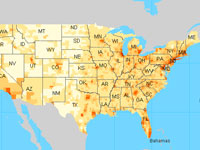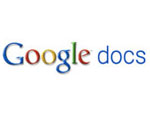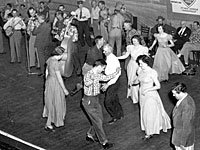Historical Context and Roleplaying

This website's videos document the practice of a 5th-grade teacher in New York teaching a unit titled Colonial New York: Developing Perspectives through Historical Role Play. This 14-week, standards-based unit covers colonial America up to the signing of the Declaration of Independence in 1776. The site provides a rich cache of materials documenting the teaching of the unit, including the teacher's initial plan; video clips of classroom activities and teacher reflections; classroom handouts and historical sources; and student work.
The site provides examples of two promising practices:
- Establishing an understanding of historical time and place before engaging in roleplaying activities or simulations; and
- Continuing to build student understanding of historical context as students elaborate roles and take on perspectives.
The teacher begins the unit with activities designed to establish a "sense of time and place" and help students understand colonial "daily life." Students then create colonial characters. Notably, the teacher structures activities so students are transported back into the colonial world before they are asked to identify and elaborate their imagined roles and lives.
To accomplish this, she plans trips to local historical sites, uses primary sources, and uses questions to frame individual lessons such as: What did colonial New York look like? What jobs did people have in colonial New York? How did people get what they needed?
After students create a colonial character, they learn about important issues and events of the time period, including the impact of the French-Indian War on British colonial policies, the colonists' responses, and the road to revolution. Students learn how taxes work, look at mercantilist laws, hold tavern meetings, and read Patrick Henry's famous speech and the Declaration of Independence. Threaded throughout this instruction is a back-and-forth between what happened and how students in their colonial roles would have experienced and thought about these events.
Many history teachers use roleplaying activities. What is less commonly done, however, is what we find here: structuring learning activities so students' roles are closely tied to the time and place within which they are imagined. This website uncovers not only the deep exploration of historical context necessary to make roleplaying more historically accurate, but also some ways for teachers to structure and plan those necessary activities.
On the website, there are additional promising features, including a focus on the way the teacher adjusts her initial curriculum plan in response to what she learns about students' understanding through both formal and informal assessments.






